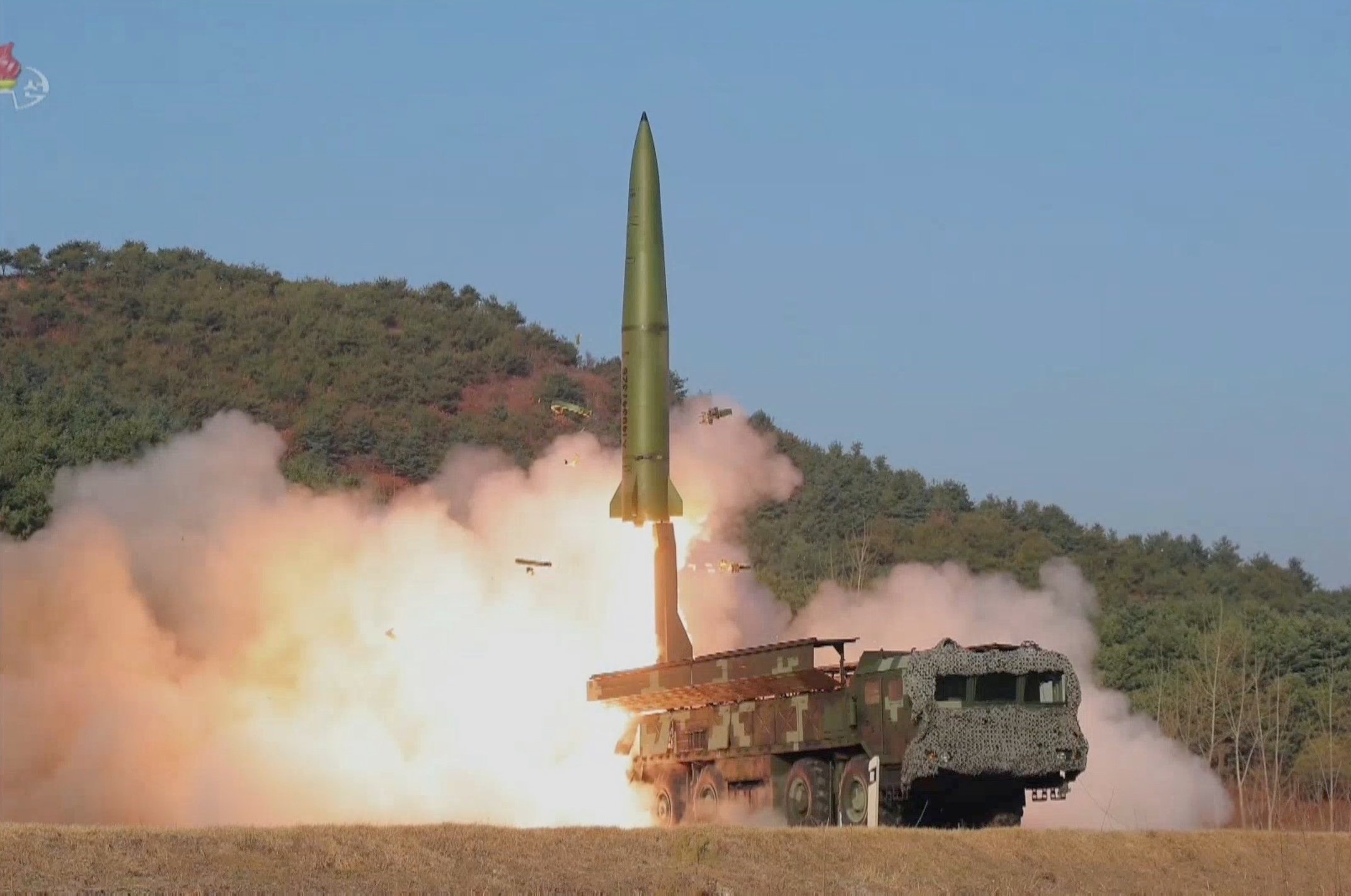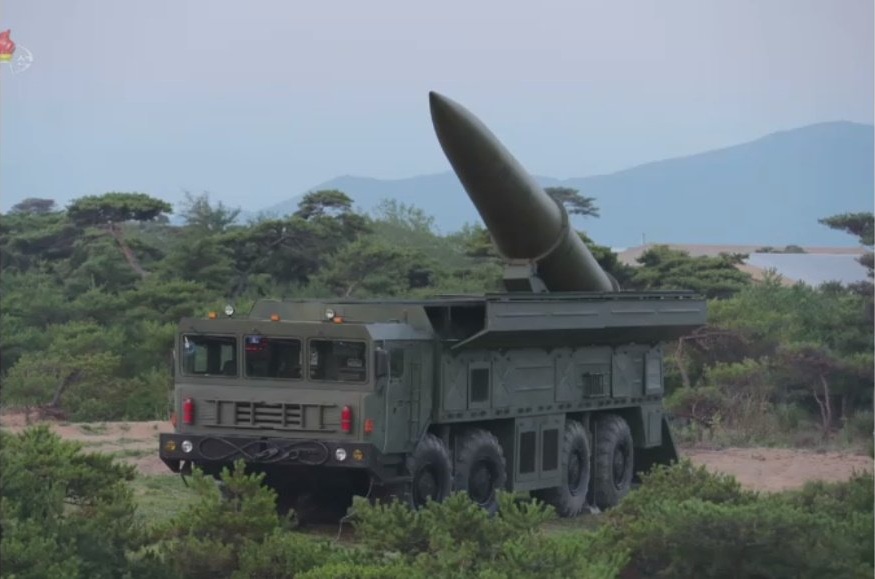The Russians once again hit the Kyiv region with a North Korean ballistic missile
11 August, 2024 Illustrative photo of the launch of the North Korean KN-23 ballistic missile. Photo from open sources On the night of August 11, the Russians fired a North Korean-made ballistic missile at Kyiv region.
The President of Ukraine Volodymyr Zelensky reported on this. The strike killed a father and his four-year-old son, and injured three other people, including a twelve-year-old boy. Mykola Oleshchuk, Commander of the Ukrainian Air Force, detailed that the Russians used four KN-23 missiles, launched from the Voronezh region.
 Illustrative photo of the launch of the North Korean KN-23 ballistic missile.
Illustrative photo of the launch of the North Korean KN-23 ballistic missile.
Photo from open sources
On August 6, Militarnyi reported that Russia attacked Kyiv region with ballistic missiles from the DPRK. The Colonel GSh Telegram channel published a photo of a fragment of an allegedly DPRK-made Hwasong-11 (KN-23) ballistic missile, discovered at the site of the enemy missile crash. It is noted that these missiles are made of low-quality components.
KN-23
The North Korean Hwasong-11 (KN-23) is actually a copy of the Russian 9M723 ballistic missile of the Iskander system, but it has a number of technical and visual differences.
The obvious ones include the structural differences in the tail part. The first test launch of the Hwasong-11Ga missile, according to intelligence agencies, took place on May 4, 2019. The missile flew about 240 kilometers, and about 690 kilometers on the next tests.
There is a theory that these are two different versions of one missile, and the mass of the warhead is 500 kilograms in both versions, but this assumption is not confirmed.
 North Korean KN-23 tactical ballistic missile. Photo from open sources
North Korean KN-23 tactical ballistic missile. Photo from open sources
Using a satellite navigation system, the circular error probability of the rocket can be around 100 meters, whereas with only an inertial system, it cannot exceed 200 meters. The Hwasong-11Ga missile, which is 8.7 meters long, is longer than the 9?723, which is 7.8 meters long and has a larger diameter, but the North Korean 'clone' has 400 kilograms less weight.
The missile can be placed on a wheeled landing gear, visually resembling a Russian 9P78-1 launcher from the Iskander system.
In both versions, the launcher can carry two missiles.